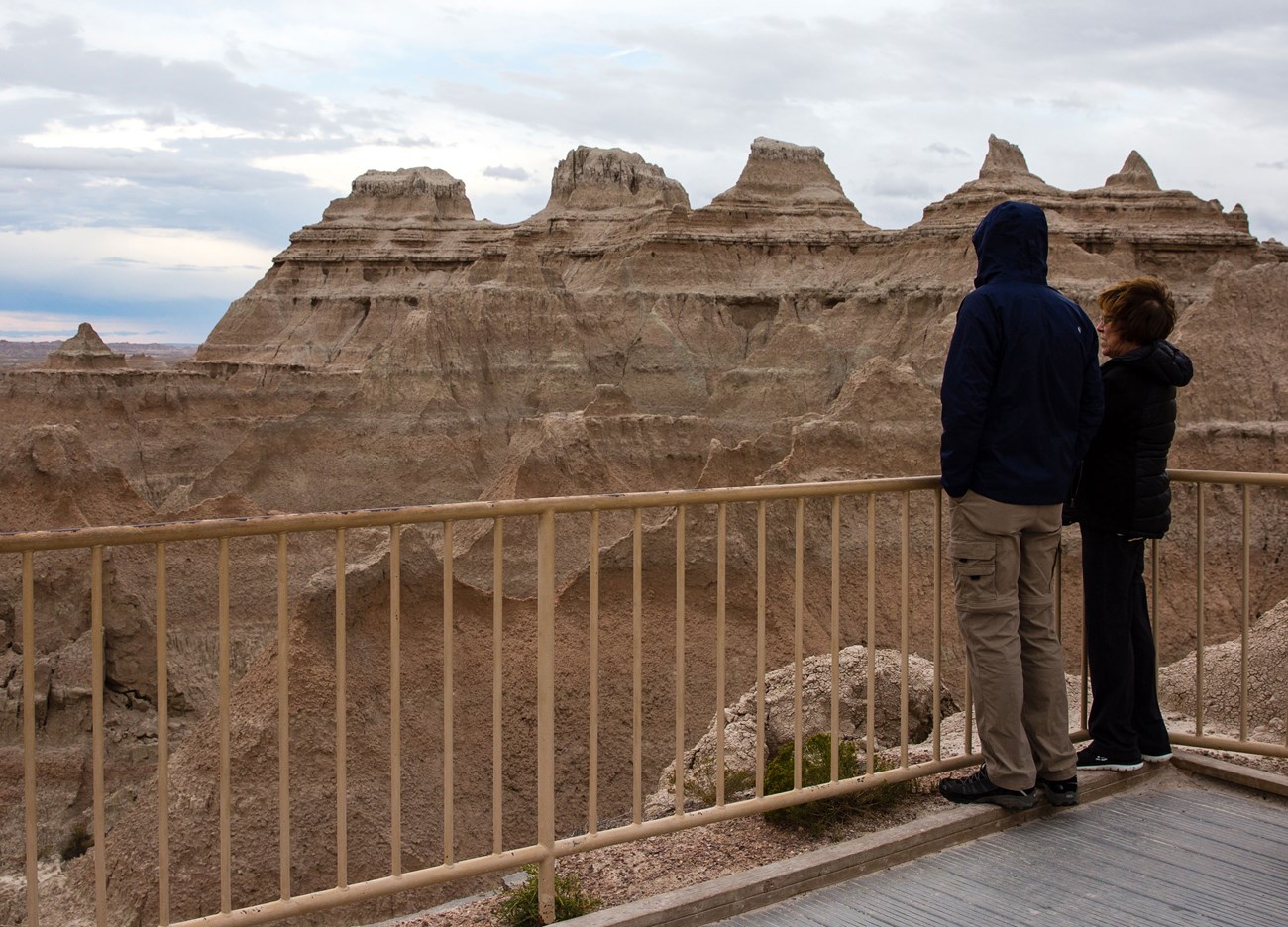
NPS photo by M. Reed. IntroductionGeologists start counting “geologic time” from Earth’s surface downward; that is, starting with younger surficial deposits and descending into older rocks and deeper time. Geologists count back more than 4 billion years to the oldest Earth materials. Astronomers help geologists count even farther back to the time of Earth’s formation, which may seem somewhat arbitrary because Earth did not appear instantaneously as a planet in space. Nevertheless, this “moment” may be defined as when Earth achieved its present mass. Scientific calculations presently place this event at ~4.6 billion years ago (International Commission on Stratigraphy). Understanding the Depth of Geologic TimeEarth’s formation occurred ~4.6 billion years ago, that’s 4,600,000,000 or 4,600 million. You probably hear people use the number “one million” all the time, but a million is really big. Have you ever tried to count to a million? Counting once per second (easy at the start, but tough when you reach the hundred-thousand mark), 24 hours per day, seven days per week (no weekends off), it would take you 11 days, 14 hours to count to one million! There are a thousand millions in a billion, so counting to a billion would take you approximately 32 years. Taking this one step further, it is not humanly possible to count to 4.6 billion; that would take about 147 years of non-stop counting! If a piece of string an inch long (about 2.5 cm) represents one year, then 6 feet (about 183 cm) is equivalent to the average lifetime of a person living in the United States. A string representing all of recorded human history would be 1.6 miles (1.0 km) long. And a piece of string representing the age of Earth would be 72,600 miles (116,838 km) long. That length of string could wrap around Earth three times (Dalrymple 1991).
Say a quarter represents each year of Earth’s history. A stack of 4,600,000,000 quarters would be more than 5,000 miles (8,047 km) high. Such a stack could reach from where you are through the center of Earth and halfway to the other side (Dalrymple 1991).
|
| January 1 | Formation of Earth |
| February 13 | Formation of oldest known rocks |
| March 27 | First recorded forms of life |
| November 19 | Cambrian “explosion” of hard-shelled life-forms |
| November 23 | Life moves onto land (Ordovician) |
| November 26 | First mass extinction (end of Ordovician time) |
| December 3 | Second mass extinction (end of Devonian time) |
| December 12 | Third and greatest mass extinction of all time (end of Permian time) |
| December 15 | Fourth mass extinction (Triassic) |
| December 15 | Dinosaurs become dominant |
| December 19 | Fifth and most famous mass extinction; dinosaurs become extinct |
| December 19 | Flowering plants begin to cover the landscape |
| December 31 | Pleistocene ice ages (last 3 hours and 26 minutes) |
| December 31, 11:38 pm | Homo sapiens (modern humans) appear |
| December 31, 11:59 pm | Beginning of the geologic time in which we live (Holocene Epoch) |
The Earth is about 4.5 billion years old, a number too large for people to conceptualize. If we were to shrink the Earth down to the size of a basketball and compress those 4.5 billion years into a few hours we would be able to observe radical changes. Continents would race around the globe, sink beneath the sea, rise up again, smash into other continents, build mountains, and erode back into the sea. Volcanoes would continually erupt and then quickly be weathered away. An astounding array of life would evolve and most of it would pass into extinction seconds later. Asteroids would occasionally slam into Earth. Indeed, the Earth would look like an extraordinarily dynamic little sphere before us.
From our reference point, change of this magnitude is hard to appreciate. Yet if we begin to grasp the immensity of geologic time, we can begin to recognize the changing nature of Earth.
Learn More

Oldest Rocks in the Parks
Learn about the oldest rocks found in the parks that range in age from 3 billion to 600 million years old.

Video: Big Ideas in Geoscience
Educational Resources

Learning Activity: It's About Time
Have you ever wondered how geologic time works? This interactive classroom learning activity helps build the basic understanding of geologic time for grades 4-9.

Geologic Time Classroom Poster
Every park contains a slice of geologic time. In this classroom resource we highlight a few parks associated with each geologic time period.

Using a simple three or four generation family tree, students will construct a relatives time tree that mimics the major divisions of the geologic time scale (Precambrian, Paleozoic, Mesozoic, and Cenozoic). For Grades 9-12.
Related Links
Moab Happenings
Last updated: February 12, 2024
